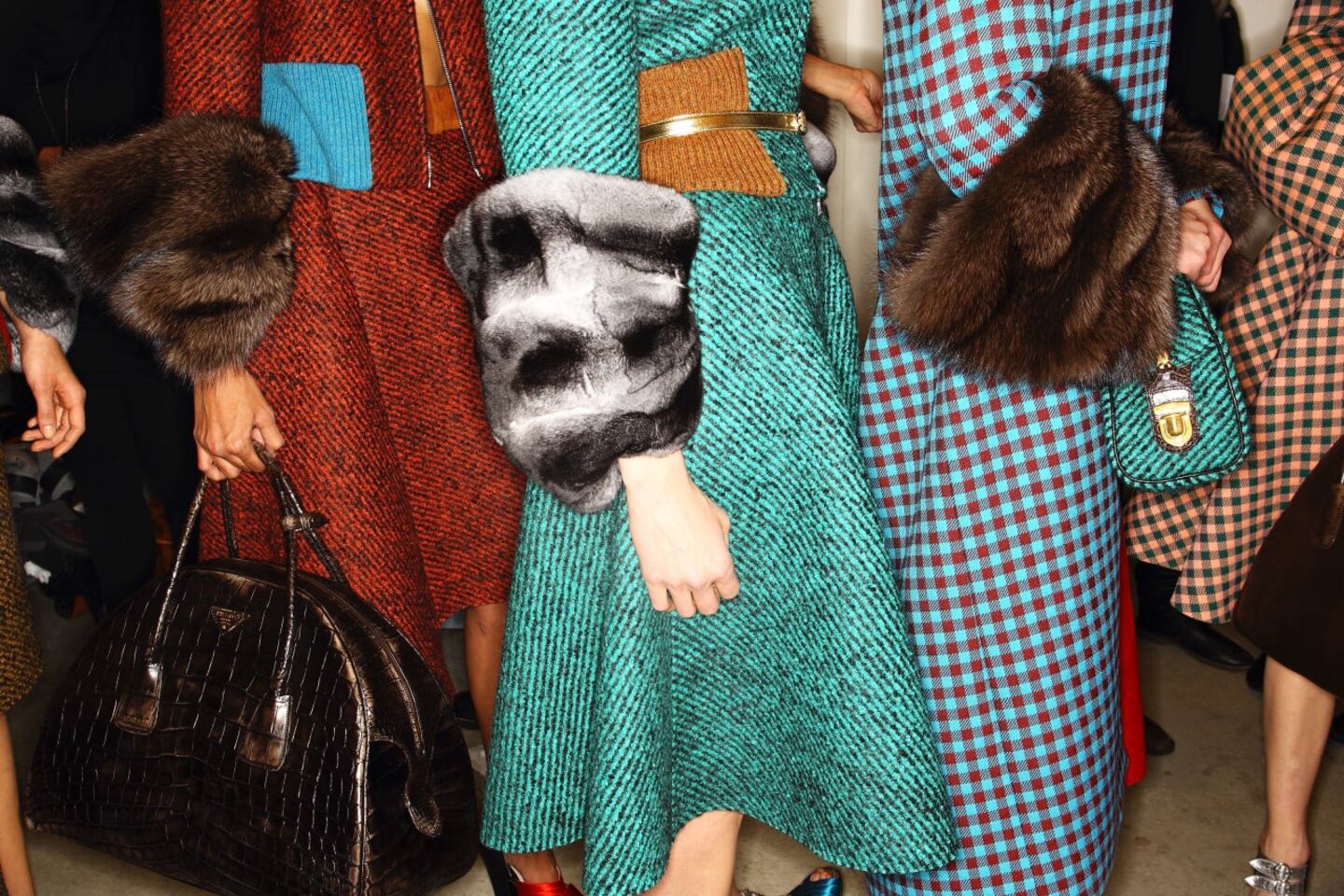
The Business of Fashion
Agenda-setting intelligence, analysis and advice for the global fashion community.

Agenda-setting intelligence, analysis and advice for the global fashion community.

MILAN, Italy — "I've got the brains and you've got the looks..." So goes the Pet Shop Boys' classic track 'Opportunities (Let's Make Lots of Money).' In Prada's case, it has both: smart management and desirable product, a combination that really is making the brand lots of money, evidenced by the company's recent announcement that its net profit increased 46 percent in the 2012 financial year, while other international luxury brands like Hermès and LVMH are reporting slowing growth, citing a slowdown in China.
What’s more, according to Mario Ortelli, an analyst at Sanford C. Bernstein, Prada’s momentum is set to continue on this trajectory for the next 2 to 3 years at least.
It’s recipe for success? A high-level of brand integrity and a diverse product mix, coupled to a closely managed retail expansion programme designed to ensure the brand’s pulling power as markets mature.
Not too Big, Not too Visible
ADVERTISEMENT
Part of Prada's current advantage is that in key growth markets, like China, the brand isn't yet too big or too visible — especially in comparison to some of its luxury peers. With 21 stores in China, Prada has half as many stores in the country as Louis Vuitton, which has 43, and around a third the number of stores as Burberry, which has more than 60 stores.
As a result, Prada is better positioned than many luxury brands to tackle the rapid maturation of what, only a few years ago, was very much a status-led market. Indeed, whereas highly-branded leather goods were once a dependable ticket to huge sales growth, 2012 has shown that luxury labels can suffer from being too visible, even in fast-emerging markets.
For example, Louis Vuitton, which some analysts have described as overexposed, lost some of its lustre with Chinese consumers in 2012. Last week, Jean-Jacques Guiony, chief financial officer of LVMH, which owns the brand, stated in a conference call with analysts that “at this point in time we miss demand from Asia,” reporting only a 3 percent revenue rise in the group’s leather goods division, 2 percentage points lower than analyst expectations.
Planned Retail Expansion and Margin Benefits
A key driver of Prada’s success is the company’s ambitious but meticulously planned retail expansion in both mature and emerging markets. In the 2012 financial year, Prada Group, which also includes Miu Miu and Church’s, opened 78 new stores and plans for another 200 over the next 3 years, reflecting a gradual shift away from the wholesale channel which commands lower margins and offers less control over the brand’s retail experience.
“[We do] not have any secret ingredients; the success of the group is the result of a strategy, that we have been pursuing consistently over the years, which is focused on geographic expansion of directly operated stores and on unwavering commitment to quality and style,” said an official spokesperson for Prada when asked about the company’s formula for success.
“The focus on retail, moving progressively away from wholesale, is not a matter of margin: it's an unavoidable choice if you manage true luxury brands. We are expanding the presence of our brands where we deem they are under represented, not just in emerging markets, but also in the more traditional ones where it's crucial to have a strong presence to capture the flow of travelers,” the spokesperson added.
But, compared to other luxury brands, the risk of Prada’s overexposure is lower because of its diverse product mix. Indeed, unlike other luxury brands, Prada is not built around dominant signifiers, like Louis Vuitton’s monogram bags or Hermès’ scarves and leather goods.
ADVERTISEMENT
Creative-Business Partnership
Perhaps the most important factor behind Prada's success, however, is the powerful partnership between Mrs Prada, and her husband, Patrizio Bertelli, the company's chief executive.
Together, they manage to deftly maintain the balance between creativity and commerciality. Mrs Prada creates instantly recognisable seasonal design signatures and creative concepts that command the respect of editors, while Mr Bertelli finds a way of translating her creative vision into products that carry this energy forward and get the hearts of consumers racing.
The proof is in the pudding. A wide spectrum of consumers, from gallerists to investment bankers to young starlets keep coming back to Prada season after season.
From analysis of the global fashion and beauty industries to career and personal advice, BoF’s founder and CEO, Imran Amed, will be answering your questions on Sunday, February 18, 2024 during London Fashion Week.
The State of Fashion 2024 breaks down the 10 themes that will define the industry in the year ahead.
Imran Amed reviews the most important fashion stories of the year and shares his predictions on what this means for the industry in 2024.
After three days of inspiring talks, guests closed out BoF’s gathering for big thinkers with a black tie gala followed by an intimate performance from Rita Ora — guest starring Billy Porter.